 30 years' experience providing walking holidays worldwide
30 years' experience providing walking holidays worldwide-
SELF-GUIDED
-
4 DAYS
-
Moderate
OVERVIEW
OVERVIEW
The Three Capes and Tasman Peninsula walk is a chance to feel Tasmania at its end-of-the-world wildest. It's a wild feeling walking this stunning landscape, staying in excellent accommodation and eating a la carte meals along the way.
There's a great variety of landscapes on the Tasman Peninsula and the Three Capes walk. The route winds in and out of heathland, dry woodland and striking sections of rainforest.
Note: The official Three Capes Track route does not go to all 3 Capes, just 2 of them. We offer the opportunity to visit all 3 Capes, the third by boat. Please read the Itinerary for further information.
IMPORTANT: Tasmanian Parks are planning prescribed burns during the month of April 2024. This may affect some of the tracks. Please contact the office for more information or consider a different time.
HIGHLIGHTS:
- Walk Cape Hauy, Cape Raoul and Waterfall Bay to Fortescue Bay, soaking up the astounding views
- Explore the Port Arthur Historic Site
- The dramatic coastline of sea caves and towering sea stacks
- Highest vertical seas cliffs in Australia, 180 million-year-old dolerite columns
- Epic views over the turquoise waters and white sandy beaches
- Optional 3 hour award-winning Wilderness Cruise to Cape Pillar (at additional cost)
- Add optional rest day after day two's more challenging walk (available on request)
ITINERARY
WHAT’S INCLUDED
- All transport including private transfers to and from Hobart
- All inclusive pack free walking holiday
- 3 nights comfortable accommodation with ensuites
- Chef prepared restaurant meals
- Cooked breakfasts and walker lunches
- Stroll comprehensive walk notes
ACCOMMODATION & DINING
We base ourselves at Stewarts Bay Lodge which is the best accommodation on the Peninsula. It is well located and the perfect base to explore the surrounding natural area if you have the extra energy.
All the 2 course a la carte dinners on the trip will be prepared by the professional chefs at your accommodation. We start each day with a cooked breakfast, a perfect way to prime yourself for the upcoming day’s walk. The packed lunches are usually a salad or a wrap with some cake or slice and a piece of fruit. Lunch will be taken on the track at some of the most incredible locations in Australia, like Cape Hauy and Cape Raoul.
GENERAL INFO
GETTING THERE AND AWAY
The walk starts at 8 am with a private transfer out to the walk. The pick up is from either Hobart Airport or Hobart CBD. Lunch will be picked up on the way to the walk. Please be prepared to walk on the first day.
At the end of the walk, you will get a private transfer back to your Hobart hotel or the airport. The time is flexible and dependent on whether you do the additional boat trip (at extra cost) on top of exploring Port Arthur.
THE TRACK
Most of the tracks are in first-rate condition. Some of the walks include sections of walking up and down again, but this is compensated by shorter walking distances overall. Full-day walks average 15-16 km. There are great opportunities for fit walkers to challenge themselves as there is plenty of additional walking that you can take up. It is a good idea on the Waterfall Bay walk to wear gaiters or long pants to ward off any unwanted bugs or insects.
MISCELLANEOUS
Alcohol or drinks with meals are not included (except tea/coffee and juice with breakfast).
Pre and post-tour accommodation: There are many hotels in Hobart, which we can pick you up from or we can pick you up from the airport. The tour starts at 8.00 am. We return to Hobart between 4.00 pm and 6.00 pm on the last day, the timing is a little bit flexible. Let the office know your plans and we will try to work the transfer in to suit your plans the best we can.
For what to bring please refer to Gear Advice on our FAQ section.
Optional Tasman Islands 3 hour Wilderness Cruise (at additional cost) can be tacked on at a convenient time during or after the trip.
WEATHER
See the Bureau of Meteorology for information about temperatures and rainfall ahead of time to ensure proper clothing. Spring and autumn are a perfect time to walk on the Tasman Peninsula. Summer can be a little warmer, however, the average temperature is only 18 degrees. Winter is often written off as a time not to visit Tasmania, let alone walk because of the rain. However, if you look at the mean average rainfall it isn’t that much more than in summer. The average temperature in winter does however fall to 11 degrees so come prepared with warm clothes and good rain gear (realistically year-round). See the gear advice section in FAQ’s for more information.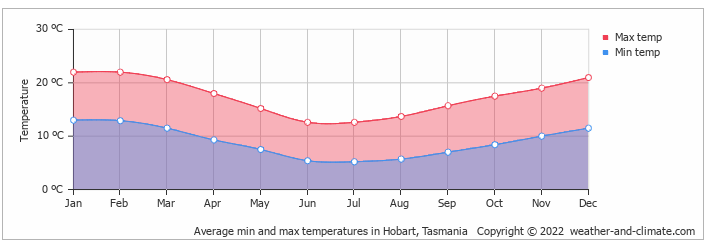
INSURANCE
We require that you have adequate travel insurance against potential losses, damage or injury, including cancellation costs and loss of luggage.
For all trips that require international travel, you must have purchased travel insurance that also includes medical evacuation coverage.
We also charge a cancellation fee if you cancel your walking holiday after we have confirmed it to cover costs incurred from our suppliers and in the office. See the FAQ section for more information.
INFORMATION PACK
For nearly 30 years we have taken pride in providing seamlessly organised walking holidays, but we know, even with that in mind, that you’ll have many more questions. You will receive a very detailed information pack and itinerary approximately 6 weeks out from departure outlining all the fine detail and much more.
CONTACT
If you have any questions now, feel free to ask one of our walks consultants or to speak with one of our guides. You can get in touch with us via our contact form, or email us at info@stroll.com
MAP
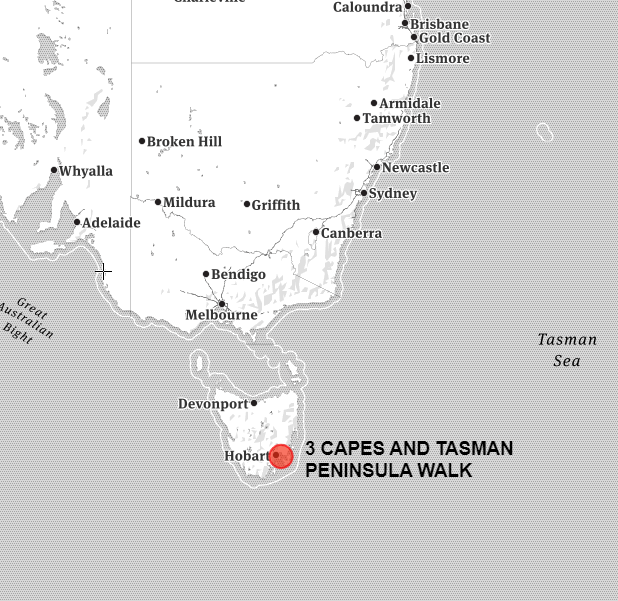
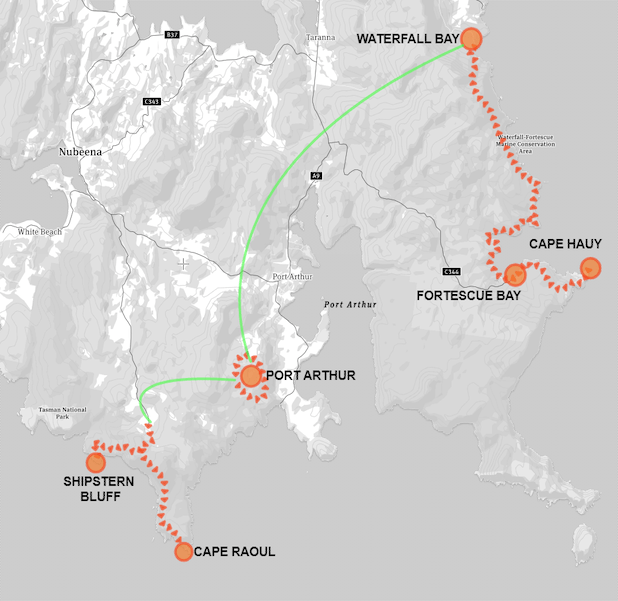
DEPARTURE DATES
REVIEWS
Customer Reviews
sections
The Three Capes and Tasman Peninsula walk is a chance to feel Tasmania at its end-of-the-world wildest. It's a wild feeling walking this stunning landscape, staying in excellent accommodation and eating a la carte meals along the way.
There's a great variety of landscapes on the Tasman Peninsula and the Three Capes walk. The route winds in and out of heathland, dry woodland and striking sections of rainforest.
Note: The official Three Capes Track route does not go to all 3 Capes, just 2 of them. We offer the opportunity to visit all 3 Capes, the third by boat. Please read the Itinerary for further information.
IMPORTANT: Tasmanian Parks are planning prescribed burns during the month of April 2024. This may affect some of the tracks. Please contact the office for more information or consider a different time.
HIGHLIGHTS:
- Walk Cape Hauy, Cape Raoul and Waterfall Bay to Fortescue Bay, soaking up the astounding views
- Explore the Port Arthur Historic Site
- The dramatic coastline of sea caves and towering sea stacks
- Highest vertical seas cliffs in Australia, 180 million-year-old dolerite columns
- Epic views over the turquoise waters and white sandy beaches
- Optional 3 hour award-winning Wilderness Cruise to Cape Pillar (at additional cost)
- Add optional rest day after day two's more challenging walk (available on request)
- All transport including private transfers to and from Hobart
- All inclusive pack free walking holiday
- 3 nights comfortable accommodation with ensuites
- Chef prepared restaurant meals
- Cooked breakfasts and walker lunches
- Stroll comprehensive walk notes
We base ourselves at Stewarts Bay Lodge which is the best accommodation on the Peninsula. It is well located and the perfect base to explore the surrounding natural area if you have the extra energy.
All the 2 course a la carte dinners on the trip will be prepared by the professional chefs at your accommodation. We start each day with a cooked breakfast, a perfect way to prime yourself for the upcoming day’s walk. The packed lunches are usually a salad or a wrap with some cake or slice and a piece of fruit. Lunch will be taken on the track at some of the most incredible locations in Australia, like Cape Hauy and Cape Raoul.
GETTING THERE AND AWAY
The walk starts at 8 am with a private transfer out to the walk. The pick up is from either Hobart Airport or Hobart CBD. Lunch will be picked up on the way to the walk. Please be prepared to walk on the first day.
At the end of the walk, you will get a private transfer back to your Hobart hotel or the airport. The time is flexible and dependent on whether you do the additional boat trip (at extra cost) on top of exploring Port Arthur.
THE TRACK
Most of the tracks are in first-rate condition. Some of the walks include sections of walking up and down again, but this is compensated by shorter walking distances overall. Full-day walks average 15-16 km. There are great opportunities for fit walkers to challenge themselves as there is plenty of additional walking that you can take up. It is a good idea on the Waterfall Bay walk to wear gaiters or long pants to ward off any unwanted bugs or insects.
MISCELLANEOUS
Alcohol or drinks with meals are not included (except tea/coffee and juice with breakfast).
Pre and post-tour accommodation: There are many hotels in Hobart, which we can pick you up from or we can pick you up from the airport. The tour starts at 8.00 am. We return to Hobart between 4.00 pm and 6.00 pm on the last day, the timing is a little bit flexible. Let the office know your plans and we will try to work the transfer in to suit your plans the best we can.
For what to bring please refer to Gear Advice on our FAQ section.
Optional Tasman Islands 3 hour Wilderness Cruise (at additional cost) can be tacked on at a convenient time during or after the trip.
WEATHER
See the Bureau of Meteorology for information about temperatures and rainfall ahead of time to ensure proper clothing. Spring and autumn are a perfect time to walk on the Tasman Peninsula. Summer can be a little warmer, however, the average temperature is only 18 degrees. Winter is often written off as a time not to visit Tasmania, let alone walk because of the rain. However, if you look at the mean average rainfall it isn’t that much more than in summer. The average temperature in winter does however fall to 11 degrees so come prepared with warm clothes and good rain gear (realistically year-round). See the gear advice section in FAQ’s for more information.
INSURANCE
We require that you have adequate travel insurance against potential losses, damage or injury, including cancellation costs and loss of luggage.
For all trips that require international travel, you must have purchased travel insurance that also includes medical evacuation coverage.
We also charge a cancellation fee if you cancel your walking holiday after we have confirmed it to cover costs incurred from our suppliers and in the office. See the FAQ section for more information.
INFORMATION PACK
For nearly 30 years we have taken pride in providing seamlessly organised walking holidays, but we know, even with that in mind, that you’ll have many more questions. You will receive a very detailed information pack and itinerary approximately 6 weeks out from departure outlining all the fine detail and much more.
CONTACT
If you have any questions now, feel free to ask one of our walks consultants or to speak with one of our guides. You can get in touch with us via our contact form, or email us at info@stroll.com
-
DATESAVAILABILITYPRICESingle OccupancyDETAILS
-
Date1 Jan 2024 - 31 Dec 2024AVAILIBILITYAVAILABLEPRICEfrom £ 1340SINGLE OCCUPANCY£ 395DETAILS
-
Date1 Jan 2025 - 31 Dec 2025AVAILIBILITYAVAILABLEPRICEfrom £ 1410SINGLE OCCUPANCY£ 415DETAILS
-
Date1 Jan 2026 - 31 Dec 2026AVAILIBILITYAVAILABLEPRICEfrom £ 1415SINGLE OCCUPANCY£ 420DETAILS
Customer Reviews
Leave a Reply
There are no review, be the first to write review.
FAQS
Q: WHERE IS THE THREE CAPES WALK LOCATED?
The Three Capes walk is on the Tasman Peninsula, which is located in the south-east of Tasmania. On the way to the peninsula, you will drive through some of Tasmania's rich heritage, rolling vineyards and hills. It is approximately 100 kms from CBD Hobart a travel time of about 90 minutes by vehicle. Please Note: The official Three Capes Track route does not go to all three Capes, just two of them, we also only walk to two of the Capes. Please read the itinerary or see the Highlights for further information.
Q: WHAT IS A SELF-GUIDED WALK?
A self-guided walk is designed for walkers who prefer to be independent. Travelling self-guided allows you to walk from place to place progressing from one accommodation to the next at your own pace with who you want when you want. You can Enjoy Worry-Free Navigation with our detailed maps and route notes. We ensure that you'll easily find your way, whether you're a beginner or veteran explorer—no compass or GPS needed. The paths are signposted irregularly. However, it's a reasonably well-defined trail, so with the comprehensive notes, no technical expertise is required. Our self-guided trips offer the freedom to enjoy the splendid isolation of the trail, without the heavy weight of a pack on your back.
Q: WHAT LEVEL OF FITNESS DO YOU RECOMMEND?
We expect people to have a reasonable level of fitness. Regular physical exercise in the lead up to the trip is recommended. This can be from walking, cycling, going to the gym or a combination of these. You will walk an average of 11kms each day. Some of the walking has an up and down component, mixed in with flat and undulating sections of track. If you exercise regularly, have a moderate to good walking fitness level and feel capable of walking up to 5 to 6 hours a day, this walk is for you.
Q: HOW CHALLENGING IS THE WALK?
Most of the tracks are in first rate condition. Some of the walks include sections of walking up and down again, but this is compensated by shorter walking distances overall. Full day walks average 10-15 kms. There are great opportunities for fit walkers to challenge themselves as there is plenty of additional walking that you can take up.
Q: DO YOU HAVE AN INCENTIVE PROGRAM?
Walking with Stroll gives you exclusive access to our incentive program. We love our Strollers and want to make it easy for you to return for another holiday. Here's what we offer: a) Frequent Walker Points: Just by going on a holiday with us, you will earn 100 Frequent Walker Points which you can redeem for a $100 discount (per person) off your next Stroll trip. These points are valid for 2 years. If you use your points on a new booking of a value greater than $2300 per person, and within 2 months of completing your previous holiday, we will double the points for you. This means that you will have 200 Frequent Walker Points to redeem as a $200 discount (per person) off your new booking. Please note: You can only use a maximum of 1 set of double points ($200) per new booking and points can't be used in conjunction with any other offer. b) Save if your group is 5 or more with a 5% discount for all walkers. Full payment will be invoiced when booking. At the time of final payment the discount will be applied when the numbers are confirmed. Not to be used in conjunction with any other offer.
Q: DO YOU OFFER DISCOUNTS FOR PRIVATE GROUPS?
If you have a group and you wish to undertake one of our many walking holidays we can apply a discount for the following group sizes: Groups of 5-14: 5% credit Groups of 15+: 7.5% credit In both instances, the group organiser receives a discount twice that of the rest of the group. The group discount is taken off each walkers' final bill according to how many group members actually register before final payment. Not to be used in conjunction with any other offer.
Q: CAN YOU CUSTOMISE THIS WALK FOR MYSELF OR FOR MY GROUP?
We specialise in customised trips. Whether it's just for yourself, or a group of 30 walkers, we are here to help you with the logistics to ensure a stress free experience. Please feel free to contact us to find out more.
Q: CAN I COMPLETE THIS SELF-GUIDED TRIP ALONE?
No, we have a duty of care that means that we can not offer any of our walks on a solo basis.
Q: DO I HAVE TO PAY A SINGLE SUPPLEMENT FEE IF I'M A SOLO WALKER?
Australian hotel accommodations (like the ones we use) charge the same, or just about the same price, regardless of whether there is one or two people in the room. This means that to cover the cost of the accommodation for your trip we do need to pass on a single supplement surcharge. This isn't a cost that we make any margin on and it is simply to cover the fact that the total room cost isn't being apportioned over two walkers.
Q: CAN YOU PROVIDE ME WITH A PERSONAL LOCATOR BEACON (EPIRB)?
If you are a solo walker we want to ensure that you are kept safe should an emergency situation arise. A fully refundable fee (upon return of the beacon) will apply. To find out more please contact our friendly team.
Q: WHO SHOULD I CONTACT IF THERE IS AN EMERGENCY SITUATION?
It is essential that you carry a mobile phone (or satellite phone) on this holiday. If you have any serious problems, please contact Australia's emergency services directly on phone number 000. Please contact our support people on the ground if you need assistance that doesn't require emergency services intervention. These numbers will be provided in your walk notes.
Q: IF REQUIRED WILL THERE BE SUPPORT ON THE GROUND?
We know that you need 24/7 support and safety. You definitely won't be on your own during this self-guided walking adventure. Our local partners are the best people to contact if you have an issue on the walk. They are just a call away to help out if needed, no matter where you are or what the hour is. Stroll is also there to assist; we will monitor your progress and can be contacted. We have carefully planned every aspect of your journey, from the best walking to seamless luggage transfers that whisk your bags from accommodation to accommodation while you're out walking so that you can walk hassle and stress-free.
Q: HOW DO I GET TO AND FROM THE START OF THE WALK?
The walk starts at 8 am with a private transfer from either your Hobart Hotel or the airport. Lunch will be picked up on the way to the walk. Please be prepared and ready to walk on the first day. At the end of the walk we will provide a private transfer back to either your Hobart Hotel or the airport. The time is flexible (default time is 3pm) and dependent on whether you would like to do an additional boat trip (at extra cost – refer below) on top of exploring Port Arthur. Additional boat trip This 3 hour cruise will compliment your overall experience of this region. It explores the peninsula's spectacular coastline with its rocky cliffs, eroded rock formations and many caves. Depending on the season you will see migrating whales, playful dolphins, sun-bathing seals and an of course an abundance of seabirds.
Q: CAN YOU RECOMMEND ANY PRE/POST WALK ACCOMMODATION?
There are numerous accommodations in Hobart. We suggest staying close to Salamanca Place and the waterfront. The options are vast and will depend entirely on your budget. You may also like to visit the TripAdvisor and search for other options to best suit your budget and lifestyle.
Q: WHAT LEVEL OF ACCOMMODATION DO YOU PROVIDE?
All the accommodations have been chosen to reflect the character of the region. Accommodations will range from small local hotels to lodges; you can be assured that wherever you stay, you will be warmly welcomed. Most importantly, the accommodations are in great locations and have all the necessary facilities to make your stay as comfortable as possible.
Q: CAN YOU CATER FOR SPECIAL DIETARY REQUIREMENTS?
On our walks, we can cater for specific dietary requirements. Please kindly provide this information when completing your booking form and only provide us with a list of your allergies or those food items that you absolutely cannot eat.
Q: WILL I HAVE WI-FI ACCESS?
Wi-Fi access will be available at the accommodations along the track.
Q: HOW DO I GET ON AND OFF THE TRACK?
Some days you will walk directly out of your accommodation and or into your evening's accommodation. On the days where this isn't possible, we will provide the appropriate transfers for you on and off the track. Our transfer providers are locals and know the area you're walking in intimately. In many cases, they offer a wealth of knowledge on your destination having lived there for many years (sometimes all their life).
Q: WHAT WILL THE WEATHER BE LIKE?
See the Bureau of Meteorology for information about temperatures and rainfall ahead of time to ensure proper clothing. Spring and autumn are a great time to walk on the Tasman Peninsula. Summer can be a little warmer but with average temperatures of only 18 degrees. Winter is often written off as a time not to visit Tasmanian, let alone walk because of the rain. Layers will be your best friend in these parts. However, if you look at the mean average rainfall it isn't that much more than in summer. The average temperature in winter does, however, fall to 11 degrees so come prepared with warm clothes and good rain gear (realistically year round). See gear advice section in FAQ's for more information.
Q: WHAT WILDLIFE MAY I ENCOUNTER IN THIS REGION?
An abundance of animals and birds exist in this region. Wallabies, echidnas, wombats, pygmy, brushtail and ringtail possums, the Tasmanian bettong, long nosed potoroo, blue tongue lizards and Tasmanian devils (they are actually quite shy) to name a few. Bird life includes Tasmanian rosellas, Tasmanian native hens and White-bellied sea eagles which breed on the peninsula. Snakes are also most likely to be around in the summer months. They will usually move away from the sound and vibration of human activity. Did you know that Tasmania has only 3 species of snakes? Tiger, lowland copperhead and white-lipped snakes.
Q: HOW IMPORTANT IS IT TO KEEP TO THE WALKING TRACKS?
By keeping to the walking track it reduces erosion, protects native vegetation and the spread of cinnamon fungus (it is a lethal disease that has serious consequences for many Australian habitats). You are also less likely to have a close encounter with snakes, ants, leeches, wasps, bees and ticks.
Q: WHAT WILL BE INCLUDED IN MY PRE-DEPARTURE PACK?
You will receive an information pack before departure, including: • Map, Map case, luggage tag and pen • Insulated lunch bag, expandable lunch box, reusable cutlery and other useful bits and pieces • Comprehensive track notes developed by and authored by Stroll with all the detail that will be needed to walk the Great Ocean Walk Your pre-departure pack will be mailed around 6 weeks prior to departure after full payment has been made.
Q: WHAT ARE YOUR LUGGAGE REQUIREMENTS?
You are allowed up to 23kgs of luggage, please no heavier as it may cause problems. Please also be aware that you may have to move your luggage to and from your room on some occasions, however, your luggage is transferred while you walk.
Q: WILL I NEED WATERPROOF CLOTHING?
A waterproof jacket is ideal. It serves two functions – to keep you dry and to keep the wind out. Cheaper plastic or nylon raincoats are good for keeping the rain out, but unfortunately, they do not breathe meaning that you'll still get wet from condensation and not really suitable for any walk. By far the best jackets are made from waterproof and breathable fabrics such as Gore-Tex. These wick your body moisture through the Gore-Tex material to the outside of the jacket through one-way pores. Goretex and other similar jackets aren't cheap, but most of the quality outdoor equipment stores have sales where prices can often be reduced by substantial amounts. And they last a lifetime! Your waterproof jacket is a practical item, designed to keep you warm, dry and comfortable in the bush and warm in areas where there is a risk of being cold.
Q: WHAT CLOTHING SHOULD I PACK FOR COLD CONDITIONS?
Depending on the time of year you are visiting it can get quite cold, especially at night. A warm jumper is a must. The best material these days is polar fleece or equivalents as they are lightweight and dry very quickly if they get wet. Wool, on the other hand, is heavy and takes a long time to dry. Cotton is not appropriate. A warm hat is also desirable. Did you know that you lose 40% of your body heat through your head? So if you're feeling cold, don a hat and feel the difference.
Q: WHAT CLOTHING SHOULD I PACK FOR WALKING THROUGHOUT THE DAY?
We recommend thin synthetic materials for walking. Cotton can get damp from perspiration. Shirts should have collars and sleeves to help prevent sunburn. Long sleeves that can be either rolled up or rolled down are a good idea. Light colours will keep you cooler. Specialist shirts have vents to allow for airflow. Shorts are great for hot weather, but remember to use plenty of sunscreen. Long trousers are great for sun protection and also for cooler weather. Trousers that have "zip off" legs are a good compromise. A sun hat is essential. Choose a hat with a brim all the way round as this keeps off more heat and sun than either baseball caps or soft floppy cotton hats. Good hats also come with some mesh ventilation in the middle and a chinstrap to keep it on when the wind blows. Choose a hat that packs easily into your case and daypack. Sunglasses are also essential.
Q: WHAT FOOTWEAR DO YOU RECOMMEND FOR WALKING?
Golden rule for walking boots/shoes – ensure they're the right fit, are totally comfortable and suitably dependable. If new boots/shoes, make sure you break them in before you come on holiday. Here are some further considerations: Boots versus walking shoes – that's largely an issue of personal preference. Walking shoes don't provide anywhere near as much ankle support as boots though. The weight of the footwear is important. You only need something suitable for day hikes on tracks – not to climb Mt Everest in! There's an old saying that 100 grams on your feet is equivalent to 500 on your back. The shoes should wrap around the foot with an even, snug hold over all parts of your foot. You should look for comfort across the balls of the feet. Your toes should not press together or touch the end of the boot – this is especially important for downhill walking. Your heel should not move inside the boot when you walk. And a laced up boot should not put pressure on the top of your foot or hurt your ankle. Leather has been the long-time favourite with many walkers but these days leather is generally only used in heavier boots, which are mostly not necessary for day walks. Most light – medium-weight boots are of good quality and have synthetic uppers. These are durable but do not keep the water out. If you can pay some more, have a look at boots with a waterproof membrane such as Gore-Tex. The membrane is a very clever product built into the boot material so, though it can't be seen, it lasts for the life of the boot. Dry feet will be more comfortable, smell less, and be less likely to blister if conditions get tough. The soles of the boots are extremely important. Look for soles that are thick enough to protect your feet against sharp rocks that might press into the sole, and with a chunky pattern that will provide better grip on slippery tracks. A Vibram sole is good quality – look for the yellow brand on the sole of the boots. Finally, we often see people who are wearing cheap, ill-fitting, loose, sloppy socks, which is an absolute recipe for disaster! Wear socks that fit firmly. Spend that bit extra and buy socks with shaped heels and good cushioning – your feet with thank you at the end of the day! Some people like to wear one pair of socks, others prefer two pair…..it is up to you. Once again, avoid loose socks that are too big.
Q: DO YOU RECOMMEND GAITERS FOR THIS TRIP?
We don't believe gaiters are essential for this walk, however, you may decide otherwise. Gaiters are designed to keep rain, grass seeds, sand, mud, leeches and other unwanted items out of the top of your boots. They come in a full range of sizes from huge mountaineering styles through to short, lightweight ones. Most of them wrap over the boot laces, around the tops of boots and upwards over the lower part of your legs. Sensible, practical gaiters should have some stiffness, so they will sit upright around the lower part of your legs, and not slip down. Also, they should go on and off without needing to remove your boots. Gaiters also provide useful leg & sock protection whenever there are scratchy plants over the track or grasses full of seeds.
Q: WILL I HAVE TO CARRY A HEAVY PACK?
All of our holidays are pack free experiences with all the logistics being organised for you. All your luggage will be moved for you so you won't need to carry a heavy pack. All you will need to carry with you is your day pack.
Q: WHAT IS AN IDEAL DAY PACK FOR WALKING?
The best piece of advice we can give is to make sure it's big enough! As a minimum, you need to fit in your lunch, water bottle/s, wet weather gear, warm jumper, camera and other personal bits and pieces. A larger pack weighs marginally more and costs very little extra and you're unlikely to regret it. Well-padded shoulder straps are a must as your pack is inevitably going to feel heavier as the day goes on. Padded waist/hip belts are also very useful as they help take some of the load off your shoulders. A chest strap is available on most good packs these days and it will stop the pack from sliding around on your back whilst you bend over or walk on uneven terrain. Several pockets or sections can also be handy, allowing you quick access to things like sunscreen, your water bottle or snacks. Even though rain is unlikely it is worth considering this for other walks. Most packs are not waterproof, so it's always a good idea to line the pack with a heavy-duty plastic bag. You can also buy a pack cover, which does an excellent job of keeping most of the rain out. Some daypacks have a curved back and this allows more air to circulate, a fabulous idea for comfort. Whilst other hikers have wet backs, with one of these daypacks your back will remain dry.
Q: WHAT ITEMS SHOULD I TAKE ON EACH DAY OF THE WALK?
These items are considered essential: • Mobile phone • First aid kit • Day pack • Quality waterproof jacket with a hood • Polar fleece or jumper • Walking shoes or boots, with good ankle support, and soles with good grips • Walking socks • Sunhat – we recommend one with a wide brim as you are often walking into the sun, particularly in winter • Sunscreen (at least 15+) – bring plenty in the warmer months • Sunglasses • Sufficient water for the entire day. We recommend a minimum of 2 litres for each person when the weather is cool and carry more in hot weather. Generally, you cannot refill water bottles during the walks, but please read the notes in the upcoming day's itinerary before setting out to assess the likelihood of being able to refill. Many people like CamelBaks – a built-in water sack that sits snugly in your day pack. It has a tube from which you can drink. If using one of these hydration systems, it is a good idea to have a spare bottle of water in your pack, just in case you suck the CamelBak dry! • Toilet paper – carry some for emergencies, but please bury everything. • Handkerchiefs instead of tissues – they last longer and are much kinder on the environment. These items are considered optional and may depend on the prevailing conditions: • Waterproof over trousers • Bathing suit • Warm hat & gloves • Camera • Binoculars • Fly net during warmer months
Q: WHAT BASIC ITEMS SHOULD I INCLUDE IN MY FIRST AID KIT?
• Your essential medication (for diabetes, asthma or allergies etc) • Safety pins • Plasters in various sizes • Sting/insect bite relief • Blister plasters (Compeed or similar) • Antiseptic wipes • Sterile dressings in various sizes • Paracetamol/ibuprofen • Triangular bandages • Scissors • Eye pad
Q: DO YOU RECOMMEND TRAVEL INSURANCE?
Please remember that it is far better to have travel insurance than not, particularly if you find yourself in the unfortunate position of having to cancel the walk. This way, you are covered. While our Stroll and/or service partners do all that we can to ensure that you and your possessions are safe and well-cared-for throughout your holiday, accidents can occasionally happen. It is your responsibility to ensure that any luggage being transported between accommodations along the trail is safely packed and does not contain any valuable and/or fragile items such as laptops, tablets, cameras, mobile phones or glass. Please protect yourself and your luggage and its contents with a suitable holiday insurance policy. This insurance should also cover non-refundable costs should you have to cancel your trip due to unexpected personal circumstances.








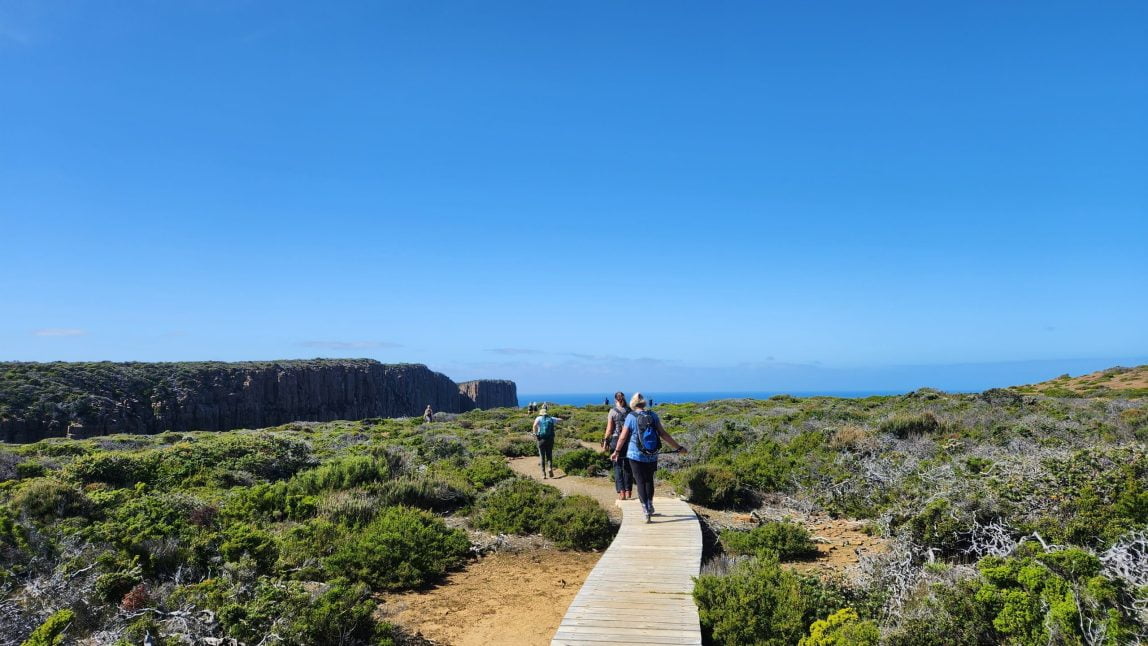
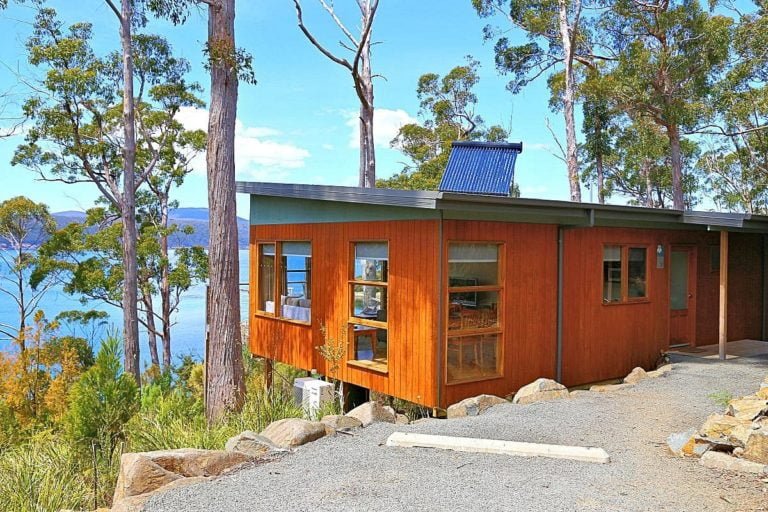
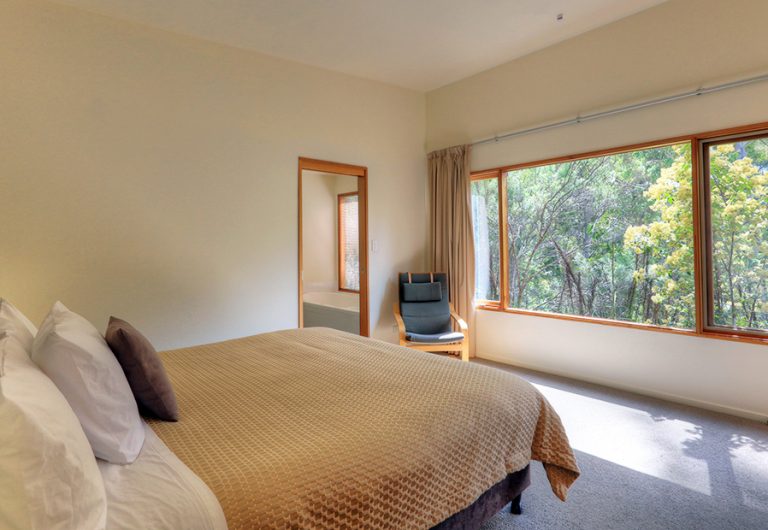
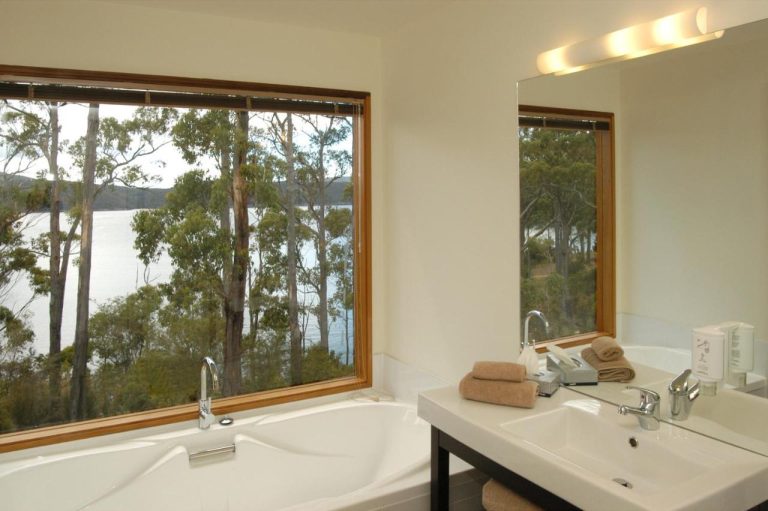
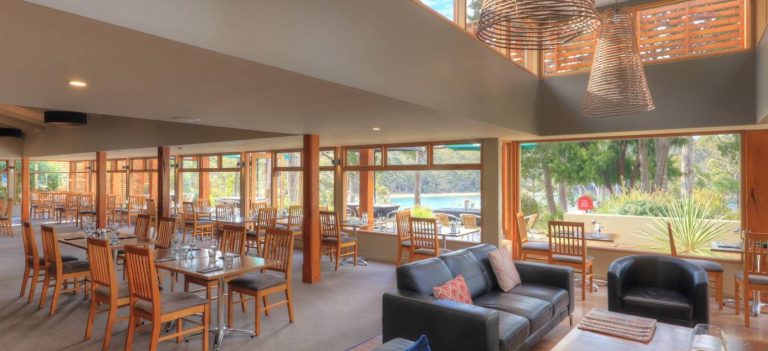
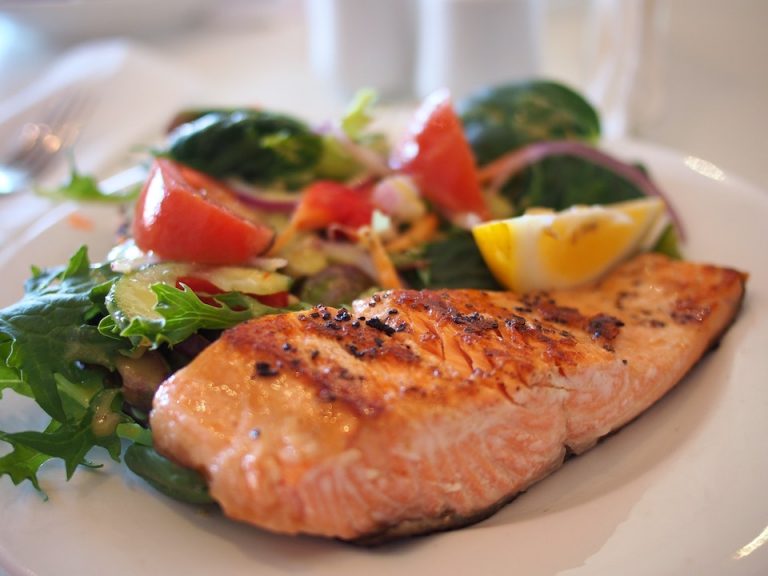

There are no review, be the first to write review.